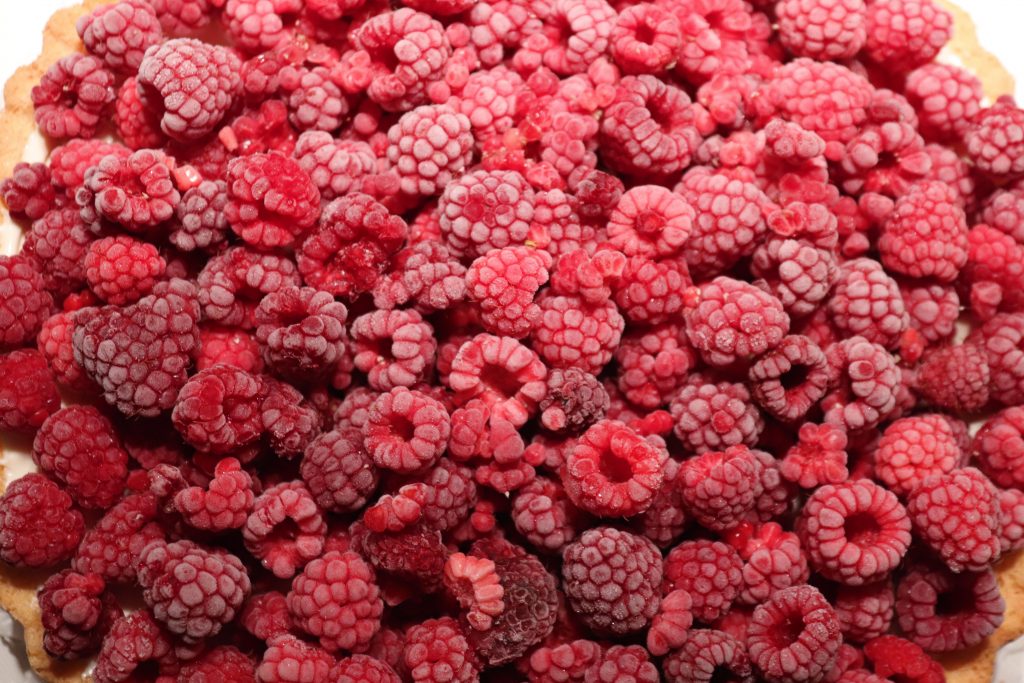Freezing is a convenient and affordable way to preserve fruits and vegetables. When you freeze fresh produce shortly after harvest, it can contain more nutrients than fresh produce that has been shipped long distances and stored for many days.

Freezing your own produce at home is a great way to take advantage of lower prices. Buy extra fruit and vegetables when prices are low and produce is in-season. Whether you have your own big garden with extra vegetables or want to save the produce in your fridge to eat later, here are a few tips to freeze them with long-lasting colour, flavour and texture.
Ten Tips for Freezing Fruits and Vegetables
- Choose high quality fruits and vegetables
Select fresh, firm, high quality produce and freeze as soon as possible after harvesting or buying. You can still freeze overripe, bruised or older produce that you have in the fridge, but it will be lower quality when thawed and may not last as long. - Remove moisture before freezing
Extra moisture in frozen food and in the freezer (caused from opening the freezer often or adding warm containers to the freezer) will cause ice crystals to form. While not a food safety issue, these ice crystals will cause texture and flavour losses.
To reduce moisture, cool blanched vegetables completely before sealing into containers and dry your washed fruits and vegetables as much as possible before placing in the freezer. - Remove air to store properly
Frozen food exposed to air will dry out over time leaving grayish-white dry spots referred to as freezer burn. Freezer burned food is not unsafe to eat, but the flavour, colour and texture are not pleasant. To avoid freezer burn, use freezer grade plastic bags or containers that are just the right size for the amount being frozen. If using freezer bags, remove as much air as possible before sealing. Try inserting a straw into the seal opening and sucking out the air for an almost vacuum sealed package. - Stop enzyme activity by blanching vegetables
For long lasting, high quality frozen vegetables, you need to blanch them before freezing. Blanching means boiling vegetables for a short, specified time to stop the enzyme activity in vegetables that negatively affects flavour, texture and colour. Check this chart for how to blanch vegetables and the time needed for different vegetables. Fruits do not need to be blanched. - Preserve the colour of fruit
Most fruit just needs to be cleaned, peeled and cut before sealing tightly in a freezer container. Flash freezing your fruit (see point #6) will make it much easier to use. If you are preparing large batches of fruit like apples or pears that turn brown quickly, place them in a solution of water and lemon juice (1/4 cup/50 mL lemon juice to 1 quart/1 litre of water) while you cut the fruit. Drain and pat dry when ready to freeze. - Flash freeze for easy use
To prevent fruit and vegetable pieces from sticking together in a large block when frozen, flash freeze your produce first. After patting your produce dry, spread it out in a single layer on a large baking sheet or tray and place it in the freezer for about an hour until the individual pieces are frozen. Pour them into a freezer container, remove as much air as possible and freeze. Flash freezing makes it easier to take out and thaw only the amount of produce you need. - Pack in convenient sizes
Unless you are flash freezing produce (see point #6), freeze your fruits and vegetables in convenient meal-sized packages. This is a good way to only take out of the freezer what you need, when you need it. - Date and label your packages
Avoid guessing games and always write the food description and date on the container. It is easy to lose track of what is stored in the freezer, and helpful to know what date the foods were preserved. - Use your frozen food
For best results, eat frozen fruits and vegetables within eight to twelve months. It will be safe to eat much longer than that as long as it stays frozen, but flavour will be lost. For information on using your frozen produce, read Cook and Enjoy Frozen Vegetables. - Know what not to freeze
There are some fruits and vegetables that do not freeze well, particularly ones that have a high water content like lettuce, salad greens, cucumbers, radishes, potatoes, watermelons, cantaloupe and honeydew. That said, with just a little extra preparation you can turn grapes or watermelon into tasty frozen treats. Try this recipe for Watermelon Sorbet from Getty Stewart.
Following these freezing tips will have you enjoying your frozen fruits and vegetables until next year’s crop is ready to harvest. Planning healthy meals and snacks is much easier when you know you have healthy fruit and vegetable options in your freezer.
Watch these instructional videos from the Manitoba Agriculture Northern Gardening series:
Freezing Vegetables
Freezing Fruit with links
For more in depth information about specific produce items, download the Home Freezing Guide for Fresh Vegetables and Fresh Fruit from the Canadian Produce Marketing Association.
For a detailed video on how to blanch and pack vegetables watch Freezing Vegetables from the Manitoba Agriculture Northern Gardening series.
Other Resources:
Simple steps to Freeze Food Right from the Dietitians of Canada.
How to Blanch & Freeze Vegetables and How to Freeze Fruit from professional home economist, Getty Stewart.
Read these articles next:
What’s in Season on the Prairies
Introduction to Canning Food






